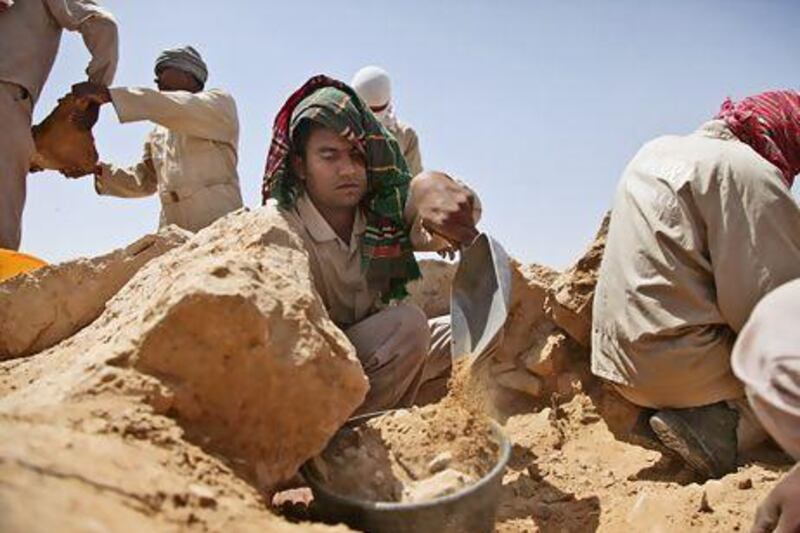The Qarn Al Harf site was first surveyed in 1999 and protected in 2001 by the late Ruler of Ras Al Khaimah, Sheikh Saqr bin Mohammed.
Three of the 60 tombs will be destroyed to make way for a new ring road but scores of other tombs scattered along the base of the Hajjar mountains will be preserved.
The excavation and study, by six archaeologists from the University of Durham and the RAK Antiquities Department, was ordered by Sheikh Saud bin Saqr, the current Ruler.
“The problem is, and it’s a problem we have in Europe as well, that sometimes even in preserved areas something has to be done or something has to be cut off for the greater good of the country,” said Christian Velde, an archaeologist at the RAK Antiquities Department.
The motorway is long-awaited in RAK, where the city centre is polluted and pockmarked by a stream of lorries that rumbles through from the quarries on the north coast.
“It was very important for His Highness to establish the fact that, if something like this happens, the Government will pay what it costs to retrieve as much information out of something before it will be destroyed or before anything will have to be moved,” Mr Velde said.
In a region inhabited for as long as the north coast, it is difficult to build without damaging ancient sites.
The Antiquities Department worked with the Government to reroute the motorway so that unique sites such as the 17th century Fahlain mosque and the 110 tombs of the Shimal area were protected.
* Anna Zacharias






